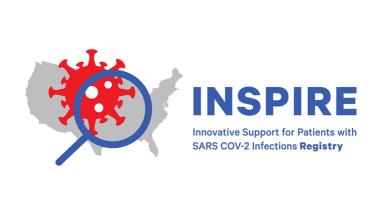The latest data from a nationwide study assessing long-term COVID-19 adds to the growing body of evidence that long COVID is not a single condition.
The INSPIRE study data identifies four clinically distinct sets of symptoms — or phenotypes — in nearly 6,000 participants.
Lead author Michael Gottlieb, MD, says this better understanding of the clinically distinct manner that patients experience post-COVID -19 complications is an important step toward both patients and clinicians being able to better identify and manage persistent, post-COVID 19 symptoms.
“While it is becoming increasingly clear that long COVID is not a singular condition, having data showing several distinct, symptom-defined phenotypes is a strong step towards developing evidence-driven approaches to treat the millions of people who continue to experience lingering symptoms,” said Gottlieb, an emergency medicine physician and researcher at RUSH University Medical Center.
INSPIRE is a federally funded collaboration of eight major academic medical centers seeking to better understand the long-term effects of COVID.
The nearly 6,000 participants — including a comparative group who visited health care facilities with COVID-like symptoms but tested negative for the virus — began self-reporting symptom data via detailed surveys beginning in December 2020 and followed for up to 18 months.
Unlike most long COVID studies that rely predominantly on a retrospective review of information from hospital electronic health records, INSPIRE allows for ongoing interaction with participants to better document the evolution of symptoms.
Symptom cluster analysis identifies four phenotypes
This paper, Long COVID Clinical Phenotypes Up to Six Months After Infection Identified by Latent Class Analysis of Self-Reported Symptoms, published in Open Forum Infectious Diseases found that 70% of participants had minimal or no symptoms at three and six months follow-up reporting.
Most long COVID studies have focused primarily on the individual symptoms of a few hundred patients without considering clusters of symptoms. But using a statistical modeling approach called “latent class analysis” that helps uncover hidden clusters in huge data sets, researchers were able to identify more clearly differentiated symptom presentations among those who reported more persistent, lingering effects of the illness.
The four clinically distinct symptom presentation groups researchers identified are:
- Minimal/no symptoms
- Tiredness, headache, and muscle/joint aches without loss of taste/smell
- Tiredness, headache, and muscle/joint aches WITH loss of taste/smell
- Multiple miscellaneous symptoms
Researchers noted that significant proportions of participants changed symptom groups over time, reinforcing the dynamic, non-singular nature of prolonged, post-COVID symptoms.
Early COVID may not predict long-term symptoms
The data also suggest that the initial symptoms during the acute illness may be poorly predictive of persistent symptoms. INSPIRE is unique among long COVID studies by having a control group that was symptomatic with COVID-like illnesses when tested upon seeking medical care, but were found to be COVID-negative. Including this cohort better allows researchers to understand the degree to which similar symptoms may not be unique to COVID-19.
For example, the COVID-positive cohort reporting much higher rates of cognition problems and loss of taste and smell at both three and six months suggests these symptoms are more distinctly related that COVID-19 virus.
Gottlieb hopes these results, and the wide set of data coming from the INSPIRE effort, provides both actionable insight and relief to patients, clinicians, and policy makers.
Every day, we hear the growing frustration of those who seek answers and treatment from the persistent symptoms that remain long after the COVID-19 virus has left their bodies. But every day we also gain more precise and data-informed understanding of the symptoms and conditions that have been grouped together as long COVID.
”Every patient is unique, and these findings can move us towards developing the answers and therapies that address their post-COVID reality,” Gottlieb says.




